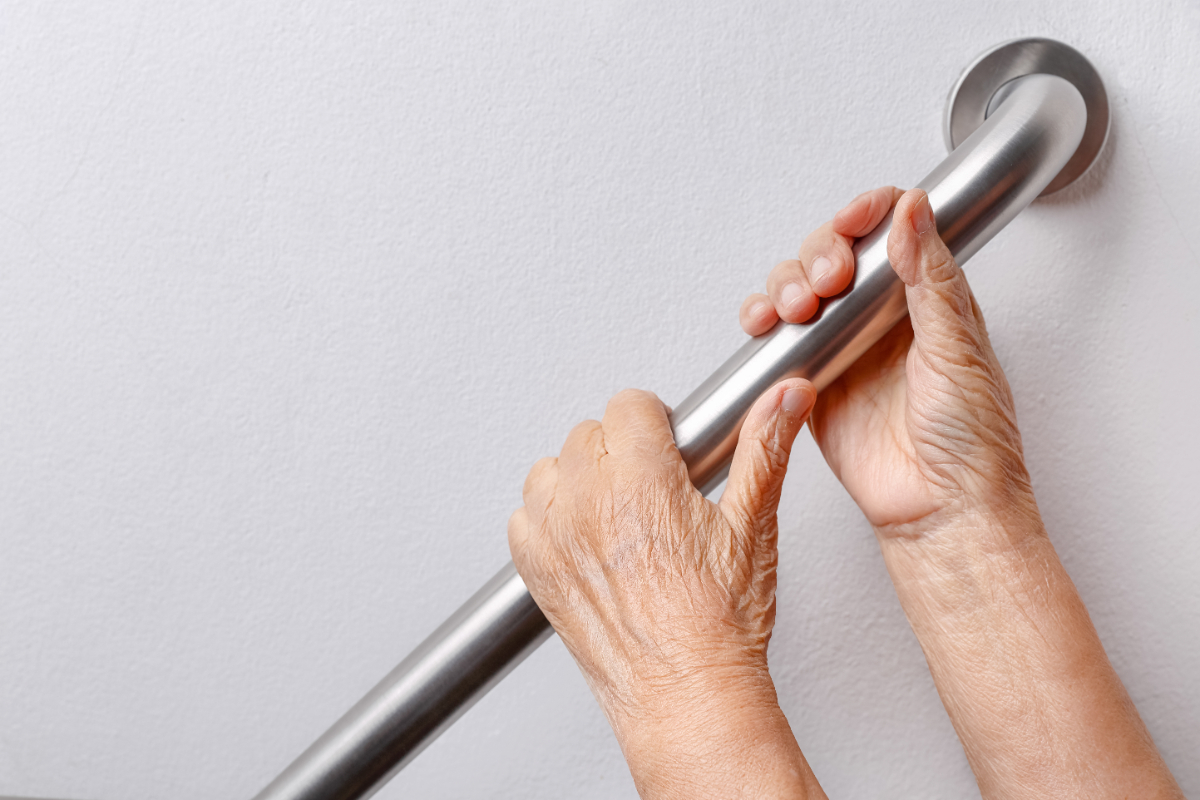Splash into Savings: A Guide to Walk In Tubs
Updated on: March 14, 2025
Walk-in tubs are safer for seniors. But they’re often expensive! Safety matters and afforable walk in tubs options are available. Some could be covered by Medicare and cost you nothing out of pocket

Understanding What You Need
First, establish what you need in a walk-in tub. Are you looking for basic safety features, or do you want a tub with luxury elements like heated seats, chromotherapy, and whirlpool jets? The more features a tub has, the more expensive it tends to be.
Consider your essential needs versus nice-to-have features, and prioritize accordingly to stay within budget. Make a list of must-have features like non-slip floors, grab bars, and low step-in height. Then, add optional features that would enhance your bathing experience but aren’t critical. This approach will help you narrow down your choices and avoid overspending on unnecessary extras.
Types of Walk-In Tubs
There are several types of walk-in tubs available, each designed to meet different needs. Standard walk-in tubs are the most common and feature a door that swings open for easy access. Bariatric walk-in tubs are designed for larger individuals and offer more space. Lay-down walk-in tubs allow users to lie down completely, similar to a traditional bathtub.
Soaker tubs are a basic type without jets, focusing on providing a safe and comfortable bathing experience. Hydrotherapy tubs have water jets to help with muscle relaxation and pain relief. Air therapy tubs use air jets for a gentler massage effect, which can be beneficial for those with sensitive skin or circulation issues. Understanding these types can help you decide which one suits your needs best.
Consider Tub Conversion Kits
Tub conversion kits can transform a traditional tub into a walk-in style, which can be a cost-saving option. They require professional installation but are generally cheaper than purchasing and installing a new walk-in tub. This option provides the essential benefits of a walk-in tub without the high cost, making it a practical solution for many seniors.
Look for Discounts and Rebates
Many manufacturers and suppliers offer discounts for seniors. There may also be seasonal sales or promotional deals, so don’t hesitate to ask about potential savings when shopping. Signing up for newsletters or alerts from various suppliers can also keep you informed about upcoming discounts and special offers.
Additionally, some companies may offer price matching guarantees. If you find a similar model at a lower price from another retailer, they might match or beat that price. Always ask about these possibilities to ensure you are getting the best deal possible.
Financing Options
If paying for a tub upfront isn’t feasible, many companies offer financing plans that allow you to pay over time. Be sure to read the fine print to understand interest rates and total cost. Some companies offer zero-interest financing for a set period, which can be an excellent way to manage the expense without incurring additional costs.
Before committing to a financing plan, compare offers from different companies. Look for plans with low or no interest rates and flexible payment terms. Understanding the full cost, including any fees, will help you avoid any surprises down the line.
Medicare and Medicaid
Medicare or Medicaid may help cover the cost of a walk-in tub if it’s considered a necessity for medical reasons. It’s important to discuss this with your doctor and insurance provider. They can provide the necessary documentation and guidance on how to navigate the claims process to maximize your benefits.
It’s worth noting that while Original Medicare (Part A and Part B) typically does not cover walk-in tubs, Medicare Advantage plans (Part C) may offer some benefits. Similarly, Medicaid coverage varies by state, so check your state’s specific guidelines and speak with a Medicaid representative to understand your options.
Non-Profit and Government Assistance
Non-profit organizations or government programs may provide financial aid for home modifications for seniors, including installing a walk-in tub. Check local resources to see what’s available. Programs like the Older Americans Act (OAA) and the Veterans Affairs (VA) may offer assistance or grants to help cover the costs of safety modifications in the home.
Other organizations, such as Rebuilding Together and Area Agencies on Aging (AAA), may offer home modification grants or low-interest loans. These resources can significantly reduce the financial burden of installing a walk-in tub, making it more accessible for seniors on a fixed income.
Buying Second Hand
Consider buying a used or second-hand walk-in tub. Make sure to inspect it for any defects or damages and ensure it comes with the necessary parts for installation. Purchasing from a reputable source or getting a professional assessment before buying can ensure that the tub is in good condition and safe to use.
You can find second-hand walk-in tubs through online marketplaces, classified ads, and local retailers. Look for reviews or testimonials from previous buyers to gauge the reliability of the seller. Additionally, consider any warranty or return policy that might be available, even for second-hand purchases.
DIY Installation
While professional installation is recommended for walk-in tubs, if you or someone you know has the necessary skills, DIY installation could save on costs. However, be aware that improper installation can lead to significant problems, so only consider this option if you are confident in your abilities and have experience with similar projects.
Before attempting a DIY installation, thoroughly read the manufacturer’s instructions and watch tutorial videos if available. Gather all necessary tools and materials beforehand. If you encounter any difficulties, do not hesitate to consult a professional to avoid compromising the safety and functionality of the tub.
Choosing the Right Installer
If you decide to go with professional installation, choosing the right installer is crucial. Look for licensed and insured contractors with experience in installing walk-in tubs. Ask for references and check online reviews to ensure they have a good reputation.
Get multiple quotes to compare prices and services. Some companies offer installation as part of the purchase package, which can save you money compared to hiring an independent contractor. Make sure the installer provides a warranty for their work to protect against any potential issues that may arise after installation.
Maintenance and Warranty
Maintenance is an important consideration when purchasing a walk-in tub. Regular cleaning and proper care can extend the life of your tub and keep it functioning properly. Look for tubs with easy-to-clean surfaces and consider features like self-cleaning systems that can simplify maintenance.
Check the warranty offered by the manufacturer. A good warranty can provide peace of mind and protect your investment. Make sure you understand what is covered and for how long. Some warranties may also offer coverage for installation if purchased through an authorized dealer.
In Conclusion
A walk-in tub can be a great investment for enhancing safety and comfort in the bathroom for seniors. With these money-saving tips, you can turn the dream of owning a walk-in tub into an affordable reality. By understanding your needs, exploring financing and discount options, and considering alternative solutions like tub conversion kits or second-hand purchases, you can find a walk-in tub that fits your budget and improves your quality of life.
Remember to thoroughly research all available options, from different types of tubs to various financing and assistance programs. Making an informed decision will ensure you get the best value for your money and a product that meets your specific needs. With careful planning and consideration, a walk-in tub can become a valuable addition to your home, providing safety, comfort, and peace of mind.

